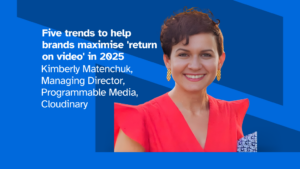By Darryl Sparey, MD and Co-founder of Hard Numbers
If there has been one benefit to these months of lockdowns, it’s that they’ve enabled me to go back and re-read some of my favourite comics from the last 30 years. One of which is Mark Millar’s Civil War, which was partially adapted in Captain America’s third film outing. The comic book differs from the film in a number of ways, most notably that it’s really a battle for Spider-Man / Peter Parker’s future, in which he has to choose a side between the ethical, purpose-driven Captain America, and the fast-talking, technologically-enabled Iron Man.
I think that many communicators may currently feel a little bit like everyone’s friendly neighbourhood super-hero. PR is bifurcating along two clear lines – reputation management and demand generation. Practitioners, agencies and in-house folk need to pick the side they are on.
My own agency, Hard Numbers, launched in June last year and has set its stall out very firmly to be on the demand generation side of things. We’re in Tony Stark’s camp. We use technology to make us better, quicker and faster at what we do, and we are unashamedly happy with helping sell product.
The majority of B2B briefs, particularly from early stage businesses, usually divide into three key requirements, with different emphasis put on each. The priorities are typically talent attraction, investor awareness, and demand generation. For businesses at this stage of development, demand generation is the core requirement, because it’s the “engine room” that drives the other two. The more clients you’re able to win, the more momentum and “product-market fit” you’re able to demonstrate to potential investors, and the more marquee brand names you’re working with will help attract talent.
For communications agencies looking to attract high-growth businesses to work with, you need to be comfortable and confident in talking about a sales outcome to your work. You need to be able to talk the same language as your clients and stakeholders, who will often be either on the senior leadership team or on the commercial side of the business. You need to be comfortable in talking in the language of, and delivering, a commercial objective as the end result of the activity you’re undertaking. Leads, leads, and leads, or the three “L’s of Marketing” as I call them.
A word quickly on the investor relations point that I raised earlier as another reason for high-growth businesses to invest in PR and communications. If you’re interested in finding more out about this, check out our Coverage to Capital report which we produced with our research partner CARMA. In it we found that out of 116 scale-ups we looked at who raised Series B funding, those that saw the largest increase in their funds raised between Series A and Series B were also the companies that, on average, generated the most media coverage. For early stage businesses, coverage correlates with capital raised.
The other key way that marketing and communications is changing is through utilisation of marketing technology, or MarTech. Marc Andreessen famously said that “software is eating the world”. He’s right and Salesforce, HubSpot and Microsoft have spent an awful lot of time at the buffet. My contention is, however, that the PR industry woefully under-indexes on its use of technology and understanding of MarTech. Most PR agencies either don’t use CRM themselves, or use it merely as a way of tracking their current sales pipeline.
They don’t build their businesses on it, and therefore don’t have a system of record for all of their engagements. As a result, the relationships they have are with their people, not the business, and people move around. We’ve built our entire business on CRM technology so that we can show to clients not just what coverage we’ve generated for them, but who we’ve approached on their behalf and what referral traffic has been driven from the coverage we’ve secured for them. We know how many times we’ve approached a particular journalist, and how successfully… or otherwise.
That core competence in our business is one that we can then bring to the benefit of our clients. If a client is using HubSpot or Salesforce, we can quickly help them make progress in linking PR and communications activity to sales outcomes in their business. And we’ve found that because we understand how CRM works, if they’re using one we haven’t used before (looking at you Insightly) we can still find our way round, and get what we need.
For the future-looking communications professional who wants to help high-growth businesses to achieve their objectives, I’d recommend three things. Firstly, get comfortable with having a sales outcome to your work, and being able to demonstrate this in the measurement of its effectiveness. Secondly, speak the language of your client, and ditch the PR yoga babble. Thirdly, use the tools of the trade – CRM, Google Analytics, Business Intelligence software. Or don’t. Take the other path and help larger organisations build and defend their reputations. But either way, just like Peter Parker, you will need to choose whose side you’re on.









